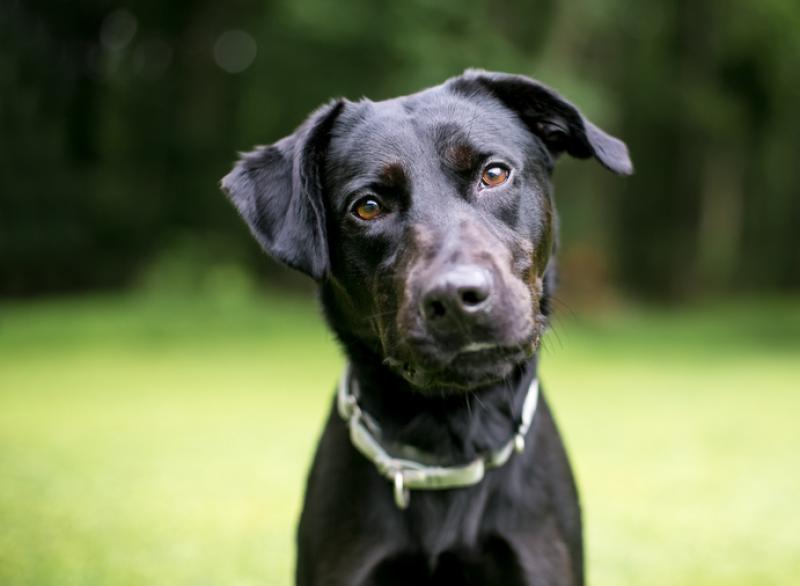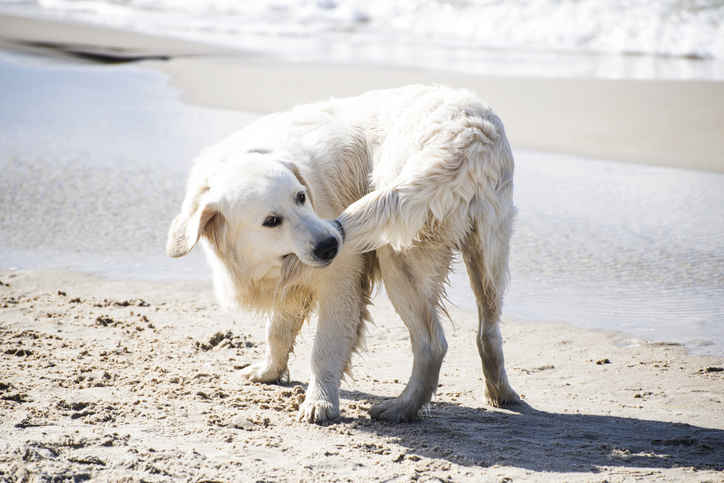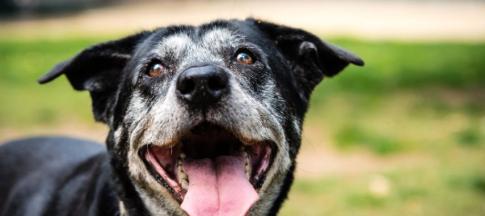Do you know what your dog is trying to tell you?

You might have noticed that your dog makes different noises depending on the situation – such as a loud, deep bark when the post arrives or an excitable high-pitched whine when you pick up their lead – but canine communication is much more complex than this.
Dogs mostly communicate their feelings through body language, and the good news is it’s easy for an owner to learn how to ‘read’ their pet. In fact, being able to translate your pet’s body language is an important part of being a responsible dog owner.
For example, if your dog tried telling you they were very unhappy about being pulled about by a young child and you continually ignored them, they’d have to deal with the situation themselves. A warning growl perhaps or maybe a bite? Whatever the result, it is likely to spell big trouble for your pet because you didn’t understand what they were trying to tell you.
This is an extreme example, but it shows how important it is to understand your pet’s mood. Follow our handy guide to find out how your pet is feeling today.
Happy
A happy dog will probably be keen to play and won’t mind being stroked or made a fuss of. Their overall body posture will be visibly relaxed and they’ll likely be displaying the following body language:
- A relaxed, open mouth
- Ears in a natural position
- Loose or wagging tail
- Eyes that look a normal shape with relaxed eye lids
- A facial expression that looks interested and alert to what is going on around them
- If inviting play, a dog could perform a ‘play bow’. By stretching the front legs forwards, while leaning on the elbows and keeping their bottom in the air, a dog is indicating to other dogs that they are ready to play.
Sad
A dog that is sad or depressed is likely to display some of the following:
- A low or tucked tail
- Their head kept low
- Shrinking away
- Sleeping a lot
- Avoiding eye contact
- A loss of interest in activities they usually enjoy
Worried

A worried dog will be trying to communicate that they are uncomfortable in a particular situation and would rather not be approached. A dog that’s displaying the following body language will need space or its anxiety is likely to increase:
- If standing, head position is low
- Tail tucked between back legs
- Ears held back
- Yawning or licking lips
- Avoiding eye contact or showing the whites of their eyes
- A raised front paw
- Turning their head away
A worried dog might display a displacement behaviour to distract a perceived threat. These behaviours include sneezing, shaking like they’re wet, nose licking, spinning, or chattering their teeth.
Fearful
A frightened dog is quite easy to spot from their body language as it can be rather dramatic, although dogs respond to frightening situations in different ways. Here are some things to look out for:
- Cowering to make themselves look small, or trying to hide
- Rolling on to their back in a submissive gesture
- Standing very still as if frozen
- Barking or growling defensively
- Wide open, darting eyes
- Ears held back or flattened against their head
- Yawning or licking lips
- Shaking or drooling excessively
Angry
A dog who is displaying any of the following body language is very unhappy, and these are definitely signs you shouldn’t ignore. They’re very clearly telling a person, or another dog, to stay away.
- Body posture is stiff, leaning forward
- Ears held up
- Hair raised along their back
- Hard stare with pupils enlarged
- Tail stiff and held up
- Wrinkled nose, showing teeth
- Lying down with ears flat and teeth showing
- Snarling
- Snapping at the air
- Biting
Tail tips

The tail is a very important part of a dog’s anatomy for both balance and communication. We all know that a wagging tail is the sign of a happy or excited dog but there are many subtleties in the movement of a tail that can make its meaning tricky to decode.
A tail that’s whirling round like a helicopter or thrashing from side to side complete with bottom wiggle can usually be interpreted as a dog being happy, friendly and eager to engage.
However, other less obvious movements could mean very different things. Here are some things to keep in mind:
- Anxious dogs sometimes wag their tails as a gesture of appeasement
- A low wag between the legs can indicate nervousness or lack of confidence
- A wag that’s accompanied by barking and staring eyes is defensive. This dog should be given space
- A high, slow wag can mean that a dog is assessing a situation
- An aroused dog might hold his tail high in the air to advertise his presence and allow the scent from his anal glands to reach a wider audience
- A tail that’s extended and curved is likely to indicate that a dog is tense and could take defensive action if provoked
In 2013, researchers from the Center for Mind/Brain Sciences at the University of Trento, Italy, found dogs had a different emotional response depending on the direction of a tail wag. By observing canine interactions while monitoring heart rates, researchers found that seeing another dog swing its tail to the right kept them relaxed but seeing a fellow canine wagging to the left seemed to induce stress.
It’s believed that the direction of wag and other dogs’ responses to it are rooted in the different hemispheres of the brain. Just as the right and left sides of the human brain are thought to control different emotions and behaviours, so too are a dog’s and this is expressed through their tail.
If your dog’s tail is wagging and you’re not sure why, look for other clues in their body language to interpret their behaviour, rather than relying on a waggy tail alone.
Bonding business
Building a friendship with someone who speaks a different language can be very hard, and it’s the same if you and your pet don’t understand each other.
Being able to decode your dog’s body language is key to developing a deep bond with your pet and strengthening your relationship. If you can read your pet’s mood and respond accordingly, you can minimise stress, conflict and frustration.
Happy pets generally mean happy owners!
I’ve spent 20 years writing about pets and exploring the wonderful relationships they have with their owners. I started as a staff writer on Dogs Today magazine, working my way up to become deputy editor in 2008. In 2010, I left the office to pursue a freelance career, relocated to north Norfolk and started a family.
Over the years I’ve contributed thoughtful human-interest features, celebrity interviews and investigative news stories to publications including The Sunday Times, Dogs Today, Dogs Monthly and Your Cat. I’ve also ghost-written veterinary books and press releases for the pet industry.
When I’m not writing, I enjoy long walks in the Norfolk countryside with my rescue lurcher Popsie. These are always followed by tea and cake.



